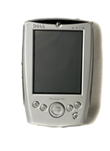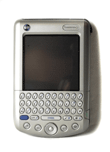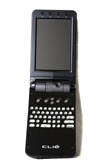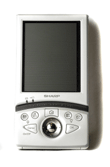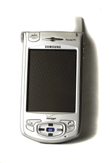How long before we promote personal digital assistants to personal digital executives? They no longer just organize work but create, edit and disseminate it on wireless networks.The latest PDAs seem more like superportable computers than ever before. They owe their new status as network nodes to IEEE 802.11b WiFi, Bluetooth and cellular wireless technology.PDAs now can have their own IP addresses and use the fastest wireless office connections. Networking has given them far greater depth without bulk.[IMGCAP(2)]Meanwhile, handheld operating systems have advanced far beyond Microsoft Windows CE. Palm OS 5, Windows Pocket PC and Embedix Linux all make the handheld interface more like a desktop PC's.File allocation and applications also behave like a PC's, and apps run more smoothly thanks to faster processors and more memory.The downside? These advances make it even harder to choose the right PDA. Despite the similar OSes, vendors have added specific features and hardware that render one PDA radically unlike another.In the past the GCN Lab has compared choosing the right PDA to choosing the right Swiss Army knife with all the right utensils. That analogy no longer applies.CompactFlash, Secure Digital, MultiMediaCard and other input ports can now attach after-market peripherals to suit new jobs.For this review, we tested eight of the latest executive handhelds for upgradeability, memory, processor speed and OS. Those criteria, coupled with price and ease of use, determined the grades.When a company that has manufactured PCs for almost 20 years decides to expand into PDAs, chances are it will make a good handheld.We almost forgot to invite Dell Computer Corp. to this roundup because it's still relatively new to the PDA market. The Axim X5, Dell's flagship PDA, made us glad we remembered.[IMGCAP(3)]The Axim arrived with CompactFlash, Secure Digital and MultiMedia slots. It had a 400-MHz Intel XScale processor, 64M of RAM, 48M of ROM and the much-improved Microsoft Pocket PC 2003 operating system.Small details added up to make the Axim a good executive PDA. Like the Sony Cli', it lacked embedded 802.11b wireless, which kept the price down. But $69 buys Dell's WiFi LAN card for the CompactFlash slot'a lot less than Sony's $149 Wireless LAN card.The Axim X5 was the only one of the eight PDAs with rubber grips on both sides. That added durability and made it easier to hold. It's surprising how slippery some handhelds are'holding one can be like squeezing a bar of wet $400 soap.Pocket PC 2003's handwriting recognition was well-designed and easy to use. The OS detected wireless networks almost effortlessly, compared with the fight its predecessor OS put up. Manual rebooting was unnecessary.The X5's speed and specifications merited our Reviewer's Choice designation. And the $293 price tag, lowest in this review, made the X5 a shoo-in for the Bang for the Buck designation.But altogether, we still found Palm OS 5 a little easier to use with WiFi, particularly when switching networks on a regular basis.Our first look at the Tungsten C showed that Palm Inc. aims to capture RIM BlackBerry users. We knew Palm would need a good product to prevail, because BlackBerry is no pushover. They have one.The Tungsten C came with a 400-MHz Intel PXA255 processor, 64M of memory'51M reserved for user storage'and an embedded Intersil Prism 802.11b wireless card.With its built-in QWERTY keyboard and 3- by 4.8- by 0.65-inch brick format, the Tungsten C looked like a smaller BlackBerry 6000. But the Tungsten C ultimately won in tough competition because of several features that Research In Motion Ltd. is only starting to give the BlackBerry.The Tungsten C had a brilliant, 320- by 320-pixel LCD capable of showing 65,000 colors. Its 802.11b connection coupled with Palm OS 5 let us surf the Internet, get e-mail and hot-sync wirelessly with an office PC.[IMGCAP(4)]Palm OS 5 made wireless connections very easily. It set identifiers to enroll and detected them automatically as we passed to different networks.Palm's Tungsten C merited our Reviewer's Choice designation.Although the Tungsten C outscored it, the BlackBerry 6750 performed well and received another Reviewer's Choice. Research In Motion set the standard for enterprise PDAs, and it continues to improve on a good set of ideas.Despite having a monochrome display and no expansion slots or embedded 802.11b, the BlackBerry had lots of tricks up its sleeve.The 6750 perfected the union between cell phone and PDA. Except for a keypad outline on the built-in QWERTY keyboard and three lines marking the receiver, the format remained the same as for the older BlackBerry.One important improvement: The 6750 accommodated up to 10 e-mail accounts. Personal e-mail isn't always a good thing at work, however, so RIM lets the network administrator disable personal e-mail access.At $499, the 6750 was priced to match the Tungsten C, leaving it up to the buyer to choose between a PDA with cell phone and wireless e-mail, or a color handheld with 802.11b access.Almost the only negative thing about Sony Electronics Inc.'s Cli' PEG-NX73V was a flimsy stylus.This wasn't Sony's top-of-the-line handheld, but it could hold its own with any exec PDA on the market despite its lack of the same bells and whistles.[IMGCAP(5)]Its signature 180-degree swivel screen exposed the QWERTY keyboard, protected the LCD and transformed the Cli' into a large, 4-inch touch-screen. Sony also embedded a digital camera in the NX73V.Our main gripe about past Cli' units was paying an extra $100 to $200 for a digital camera that had only 0.3-megapixel resolution. Sony listened. The NX73V arrived with a 1.3-megapixel camera capable of 640-by-380 resolution.Another past complaint, remedied in the NX73, was Sony's proprietary Memory Stick technology as the only source of expansion.Now with a flick of a switch, a cleverly designed CompactFlash slot comes out the back of the PDA. It can accommodate anything from a wireless modem to a 4G flash card, which with a 1G Memory Stick Pro expands the memory to 5G.The Cli' took only a Universal Serial Bus 1.1 cable, instead of the faster USB 2.0 that would have been a better choice with the 1.3-megapixel camera, 16M of RAM, expansion slots and 200-MHz processor.Nevertheless, the $499 PDA had everything a user really needs plus the tools to add on almost anything else.Those features, coupled with a modified Palm OS 5 interface for easier navigation without the stylus, deserved a Reviewer's Choice designation.[IMGCAP(6)]The Zaurus SL-5600 from Sharp Electronics Corp. resembled the Dell Axim with two exceptions.The Zaurus' Linux-Java operating system had multiple menu tabs for easily navigating apps and saving and retrieving files. After some testing, we began to prefer the interface to Pocket PC's.The second distinction from the Dell unit: Despite nearly identical specs, Sharp's $450 price tag was almost double Dell's.Built with a 400-MHz Intel processor, 64M of flash memory and 32M of synchronous dynamic RAM, the Zaurus was powerful enough to handle almost any app. In the past, we might have wondered about compatibility of a Linux platform with non-Linux applications. But Sharp guaranteed seamless integration, and we found it so.With its CompactFlash and MultiMediaCard-Secure Digital slot, the Zaurus met our expansion criteria for an executive PDA. Likewise, the built-in QWERTY keyboard made it possible to transfer and edit Microsoft Word and Excel files. We could view PowerPoint files but not edit them.One area Sharp should improve was chassis design. At 5.4 by 2.9 by 0.9 inches, it was bulky to carry around. And a flimsy plastic LCD protector did not improve its looks.[IMGCAP(7)]The SGH-i700 from Samsung Electronics America Inc. put both phone and PDA under the same Pocket PC OS 2002 roof. The OS did a decent job of blending the features, but there should be a hot icon on the desktop to turn the phone on directly instead of having to go to Start, Phone.The main problem with the SGH-i700, besides a hefty price tag, was a nearly 4-inch LCD that called for a stylus or long fingernails. Phoning was clumsy.The SGH-i700 had the features to make it competitive with any executive PDA, however. Pocket PC-cell phone devices usually suffer from limited memory and processor speed. But the 300-MHz processor was fast enough to access all 64M of built-in memory and Secure Digital or MultiMediaCards from the well-placed side port.Samsung could shave $100 off the price and be more competitive by getting rid of the embedded 0.3-megapixel camera. Another improvement would be upgrading to Pocket PC 2003, which is more functional for a phone interface.We'd also like to see a better LCD visor than the current bulky attachment, which almost forced us to carry it like a purse. But the stylus was well-designed, and the removable extra battery was a great idea.If you took an older Palm OS device and added a bulky phone and slow processor, you'd have Handspring Inc.'s Treo 300.Designed as a PDA with phone capability, the Treo had Palm OS 3.5.2, a 33-MHz DragonBall processor, 16M of RAM and a QWERTY keyboard. There were no expansion slots and a poor, 160- by 160-pixel LCD capable of showing only 4,000 colors'not the standard 65,000.[IMGCAP(8)]Another negative was no memory expansion port'only a charging cradle. Even the relatively low $299 price seemed high for this device. But Handspring's forthcoming Treo 600 should remedy most of the 300's problems.The biggest surprise of this review was poor performance by Hewlett-Packard Co.'s iPaq h5450.Although specs were good and there were lots of extras, we expected more for $609 than a 400-MHz ARM processor, 64M of RAM and built-in 802.11b.Wireless access was very difficult to set up through Pocket PC OS 2002. We had to navigate window after window, search for a connection and then manually reboot. Compared with the Palm OS 5 competitors, iPaq's wireless networking reminded us of brain surgery.Other problems were the embedded Bluetooth, which adds to the cost but is seldom used, plus a built-in silicon chip fingerprint device that didn't work right.Bypass that headache and save $100 with a Secure Digital or MultiMediaCard to store and carry sensitive data instead of relying on fingerprint protection.To find out more about trends in PDA design and features, go to and enter 135 in the GCN.com/box.(Corrected 1:03 p.m. July 29, 2003)
WiFi, cellular and Bluetooth transform pocket gadgets into powerful network toolsExperience showsMeets the competitionIt's not for mewww.gcn.com


